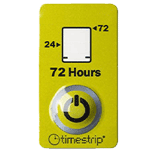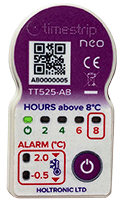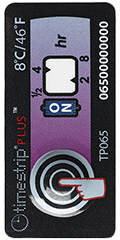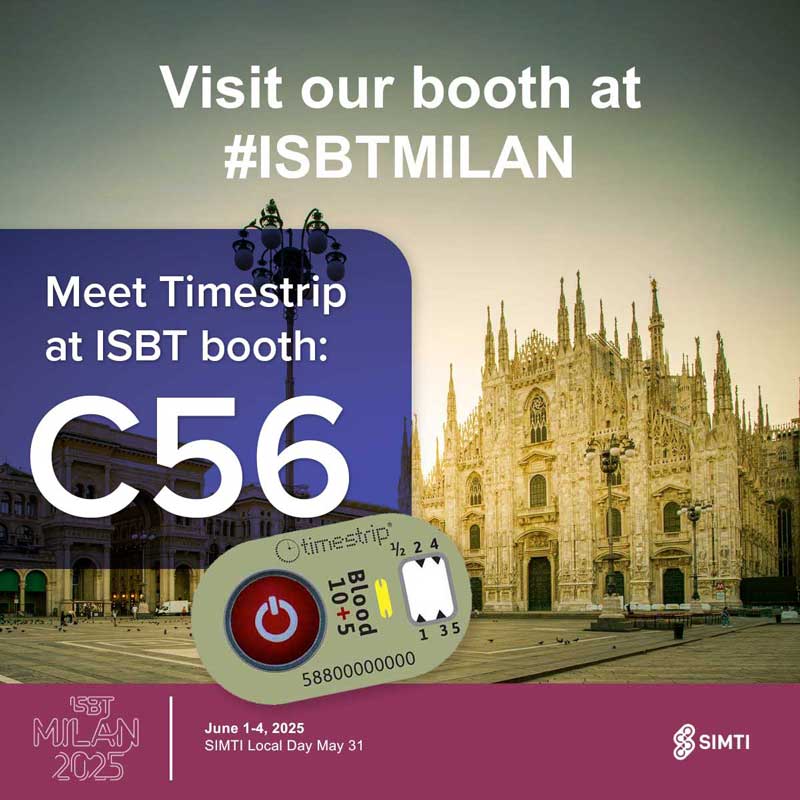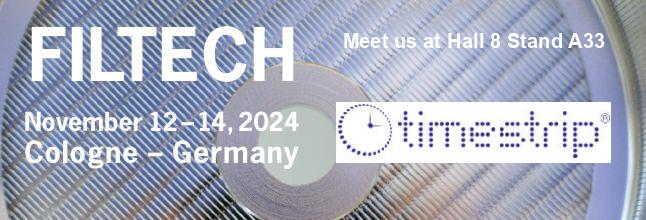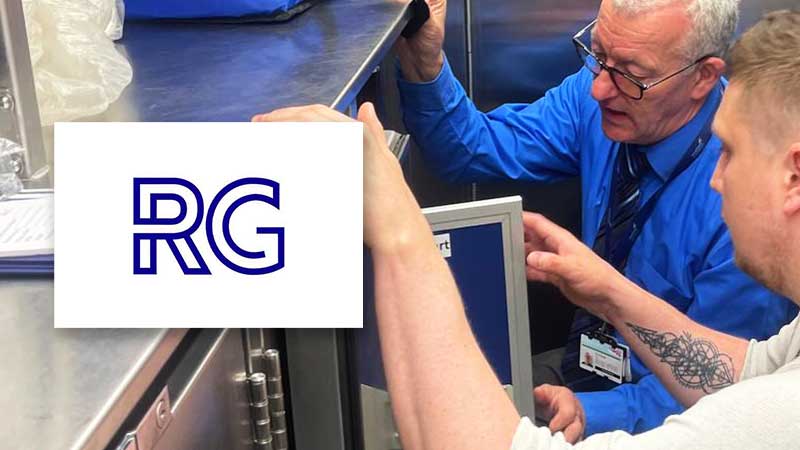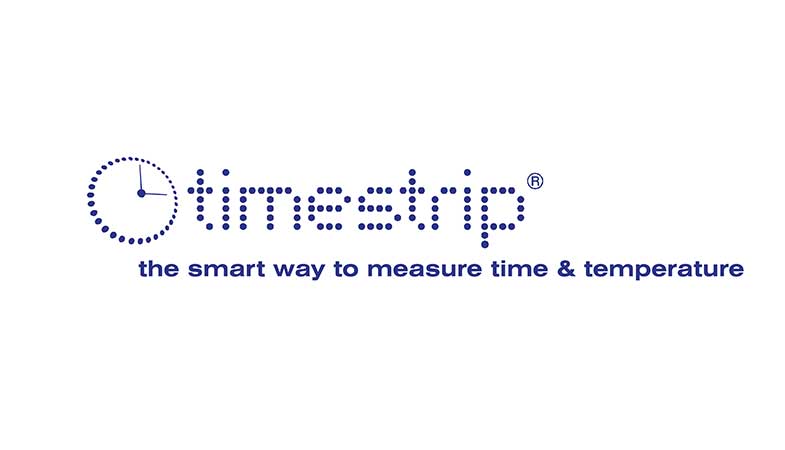
Belgium Military Hospital uses Timestrip Temperature Indicators
Belgium Military Hospital uses Timestrip Temperature Indicators to help protect vital blood stocks - PRESS RELEASE
Smart label pioneers Timestrip, working with their Benelux distribution partner INNOLABEL, have confirmed that the Queen Astrid Military Hospital in Belgium has adopted a temperature control regime for red blood cells, platelets and plasma using Timestrip Temperature Indicators. Application of the Timestrip labels is helping to expose potentially fatal changes caused by damaging ascending or descending temperature and prevent unnecessary wastage of valuable life saving products through accurate temperature monitoring outside the cold chain
In addition to ongoing patient care and clinical research conducted at the hospital, there is a burns center and a blood bank taking donations from the active military and local civilian defense staff. Patients in the burns center are treated with blood products from the blood bank, along with children in the Hematology Oncology Center at the nearby Queen Fabiola Hospital.
Blood products are also shipped abroad to treat service personnel on foreign assignments, often in lifesaving scenarios.
In line with the Federal Public Health regulatory guidelines, the red blood cells, platelets and plasma are collected, processed and stored at their prescribed temperatures until released from the cold chain. Red blood cell concentrates are stored in refrigerators at +4 °C. Blood plasma is frozen to -80 ° C. Platelets are stored at a temperature of +22 ° C and gently agitated to prevent coagulation. The temperature in medical refrigerators is constantly monitored and reported, in line with regulatory demands.
However, the transportation of the red blood cell concentrates from the blood bank refrigerators to the care unit or operating theatre takes place in refrigerated boxes. It is here where Timestrip indicators become the guardians of product quality, monitoring individual product consignments for temperature abuse.
Timestrip indicators are activated by simple finger pressure and placed directly on to blood bag labels, monitoring the core bag temperature and providing clear visual indications of temperature excursions between 2-8 °C - including the length of time of that excursion. Freeze indicators also used on products to identify if a damaging temperature descent has occurred below 0 °C, either at altitude or in severe cold climates.
Timestrip indicators show that the necessary transportation temperatures (outside of the controlled cold chain) have been maintained. As a result, decisions regarding the permissible return of stock to the blood bank, or the safe use of products kept in cool boxes over a prolonged treatment period are made possible. The failsafe nature of the Timestrip technology and the irreversible display readings remove all ambiguity from the quality checks.
Without Timestrip indicators, the care teams would be obliged to follow The Federal Public Health guidelines that demand red blood cell concentrates returned to the blood bank are destroyed, if there is no proof that optimal storage conditions were maintained. The result is that invaluable blood products are destroyed by this lack of certainty. In the past, this ambiguity has led to significant wastage of perfectly good product, which is both costly and ethically uncomfortable to front line teams who know that blood donors give blood to help protect life, not see their donations discarded due to ambiguity.
Commenting on the adoption of Timestrip indicators, Dr. Christian Vandenvelde, Head of the Military Department for Blood Transfusion observes "By using the freeze indicators we can tell if the product has been frozen during storage or transport. Should an error occur and, for example, platelets have been kept in a freezer instead of at room temperature, then the freeze indicator makes this temperature abuse absolutely clear. With red blood cells, freezing causes the red blood cells to break down and if the temperature rises too high then bacteria could multiply to dangerous levels."
There are no special storage requirements for Timestrip labels which makes handling much more efficient when compared to other indicators. This is critical in operational terms, given that the blood bank teams have identified the need for speed when it comes to ID-tagging red blood cell concentrates once removed from the cold chain.Lieutenant France T'Sas, Doctor in biomedical sciences, has seen a big improvement in the way products are handled, commenting ''By using the TimestripPlus label, we noticed that there was already a limited excursion of the optimal temperature during ID - tagging of the red blood cell concentrates. The fact is that it warms up quickly, while it takes much longer to cool down. Timestrip indicators have helped identify this and as a result we have adapted and speeded up our procedures to prevent these excursions. The TimestripPlus label is very user friendly, very accurate and readable to anyone without any additional explanation.''
Dr.Vandenvelde concludes, "By applying freeze indicator and a TimestripPlus label, we can demonstrate that we now have continuous temperature monitoring of our blood products. This also means that we have more certainty on the storage conditions in order to take back blood products. Moreover, any human error can be discovered and critical mistakes avoided.
As a results of these advances in red blood cell product monitoring , we are now also using Timestrip labels with different temperature limits to apply to the platelets and plasma , because here continuous temperature control is an absolute must. Also, the cost of a TimestripPlus label is negligible in relation to the value of the blood products. These life saving products are too precious not to employ all means possible in order to improve our procedures, ensure quality and remove unnecessary wastage.
"The Belgium Military logistics teams are also using Timestrip indicators for temperature control of red blood cells during air transport to Africa, where they have soldiers in active service. All air transport equipment is validated for the transportation of red blood cell concentrates and both the Timestrip Plus and freeze indicators are used inside the validated shippers to help front line medical teams keep an eye on optimal temperatures during transport.

